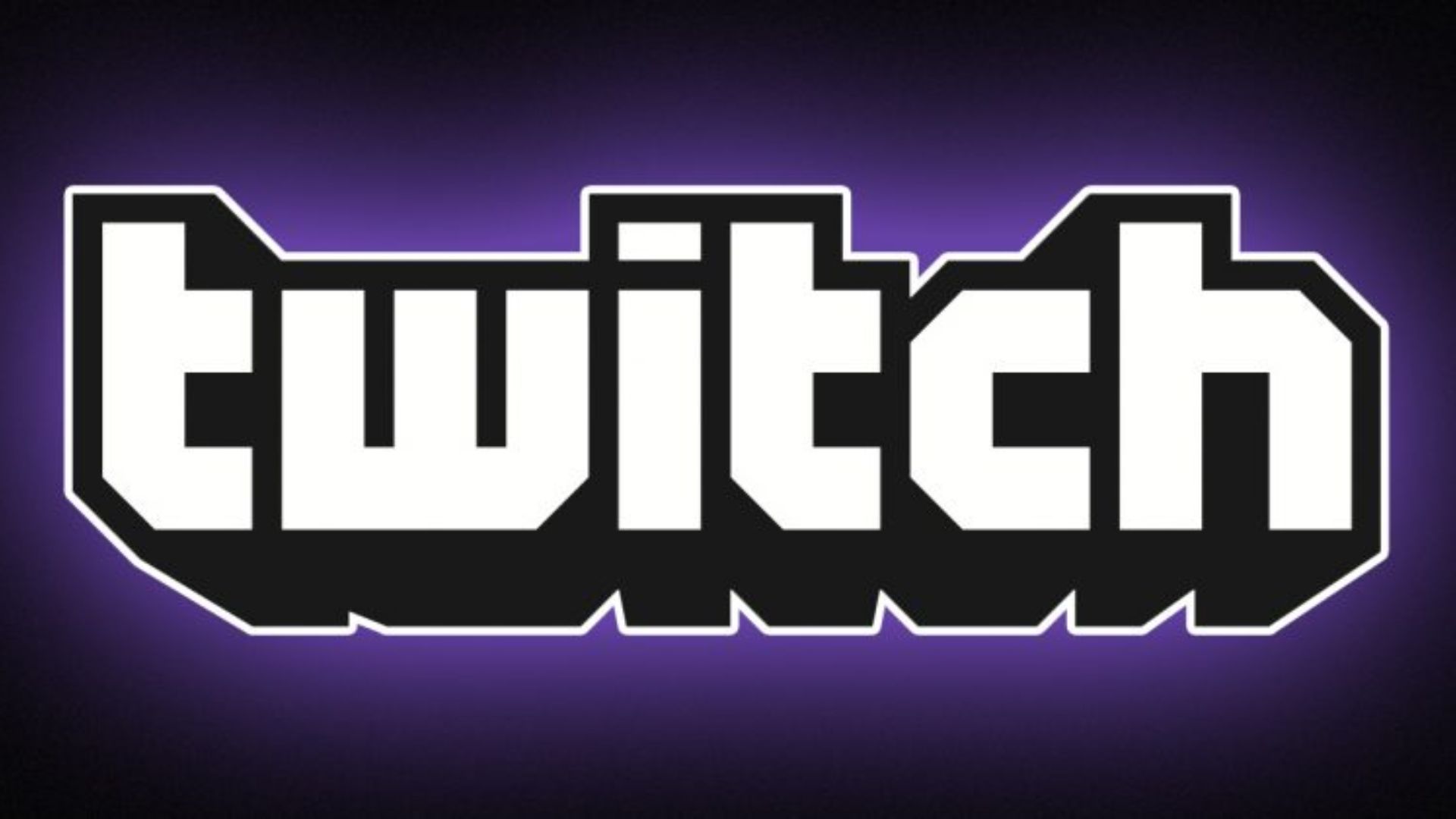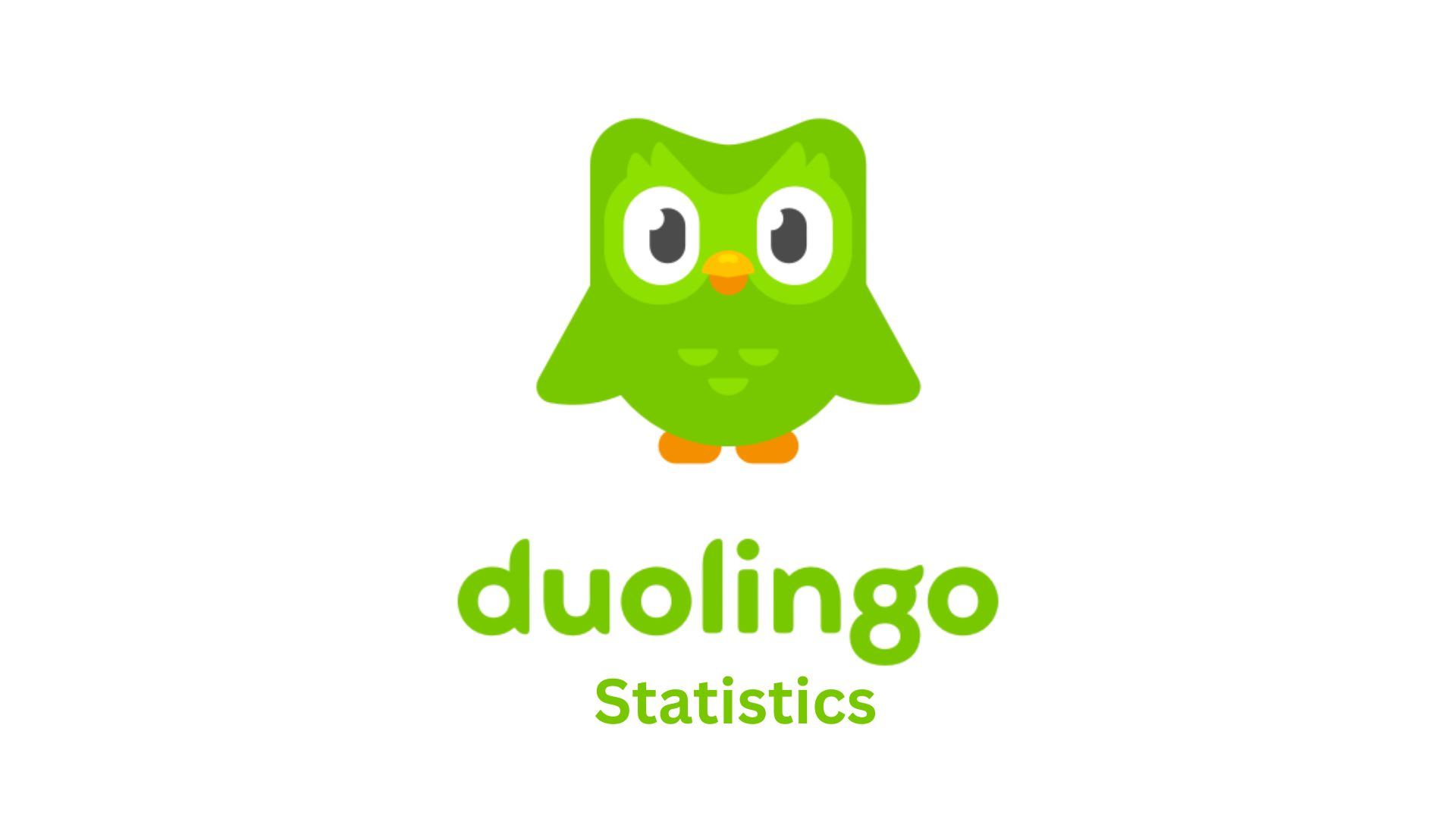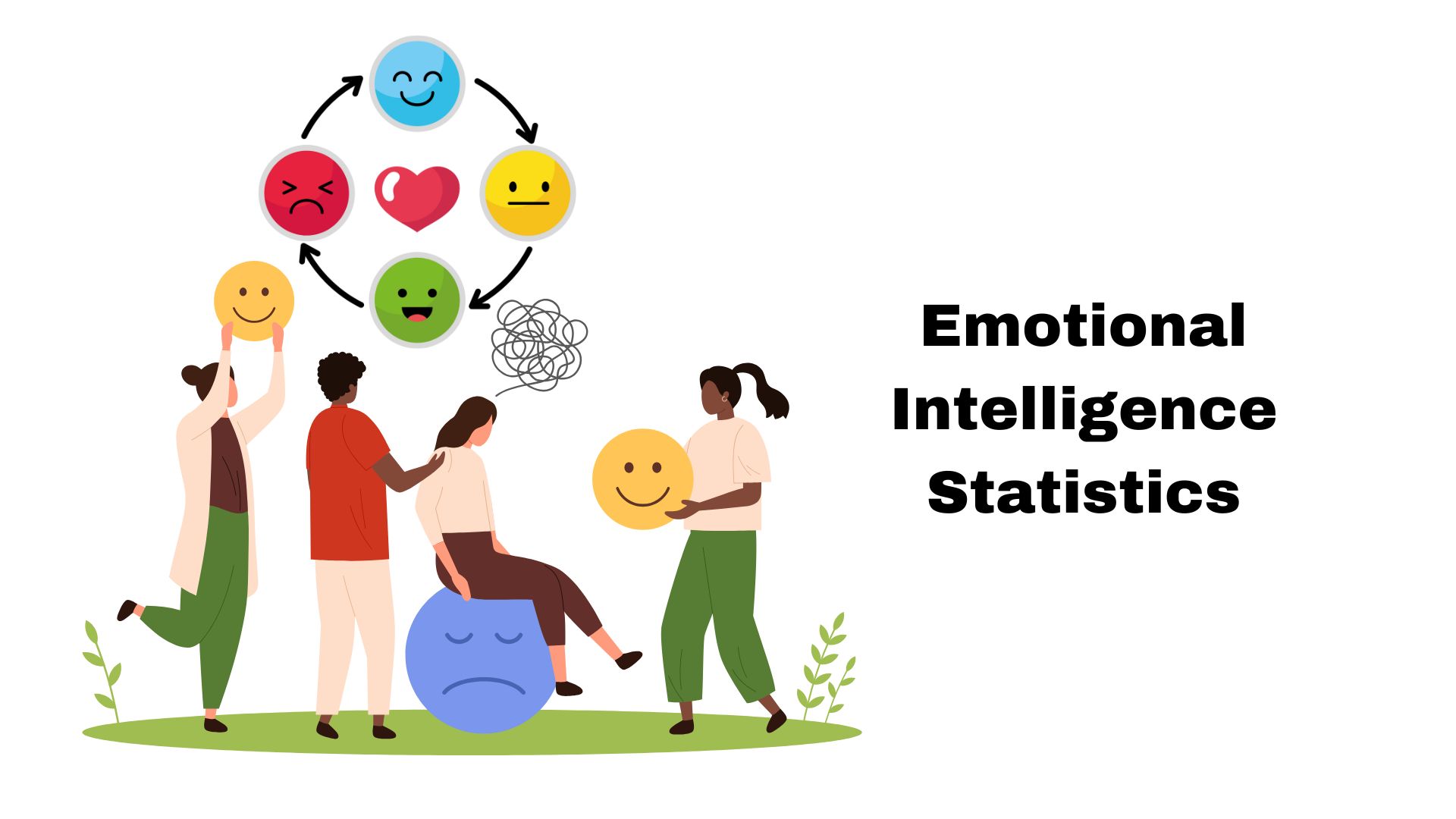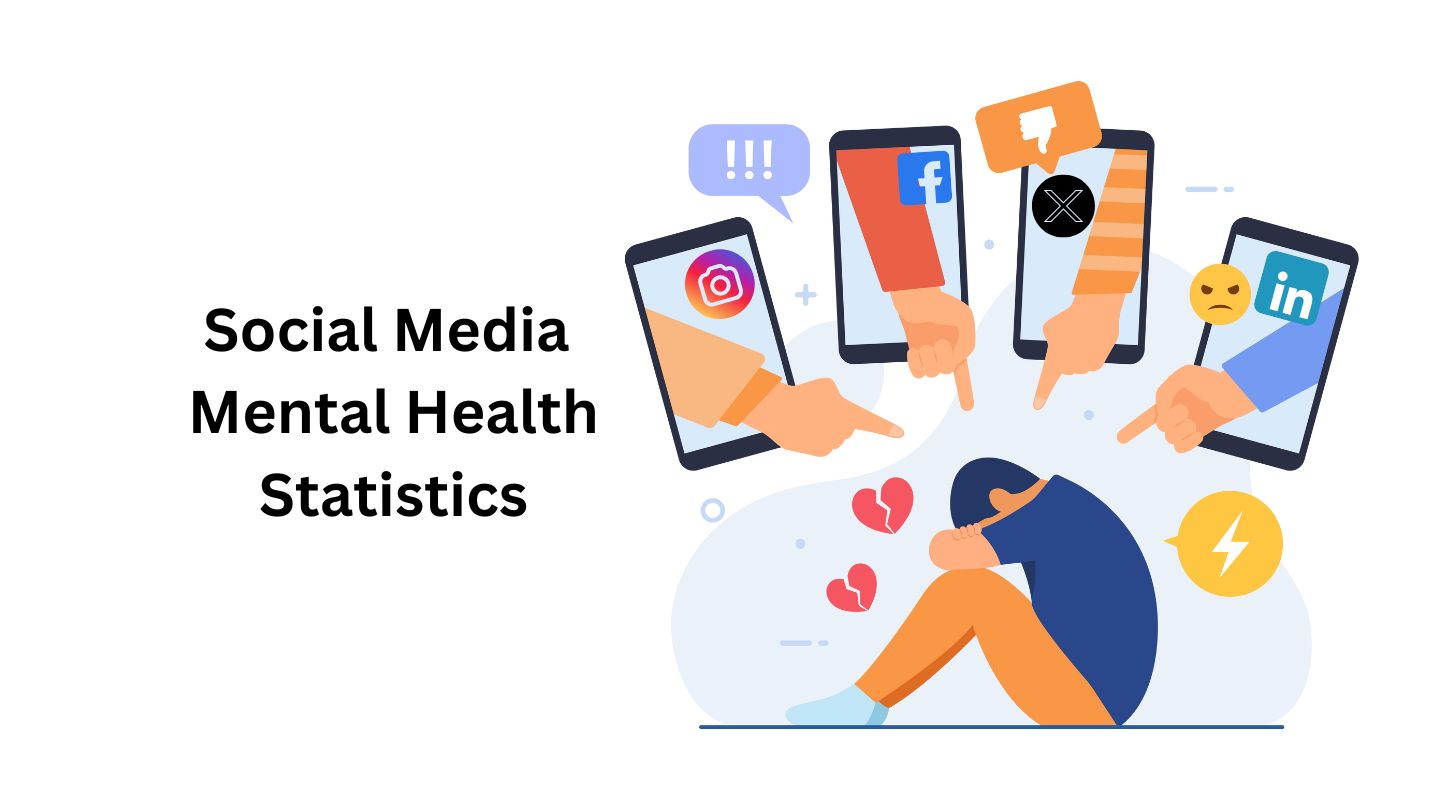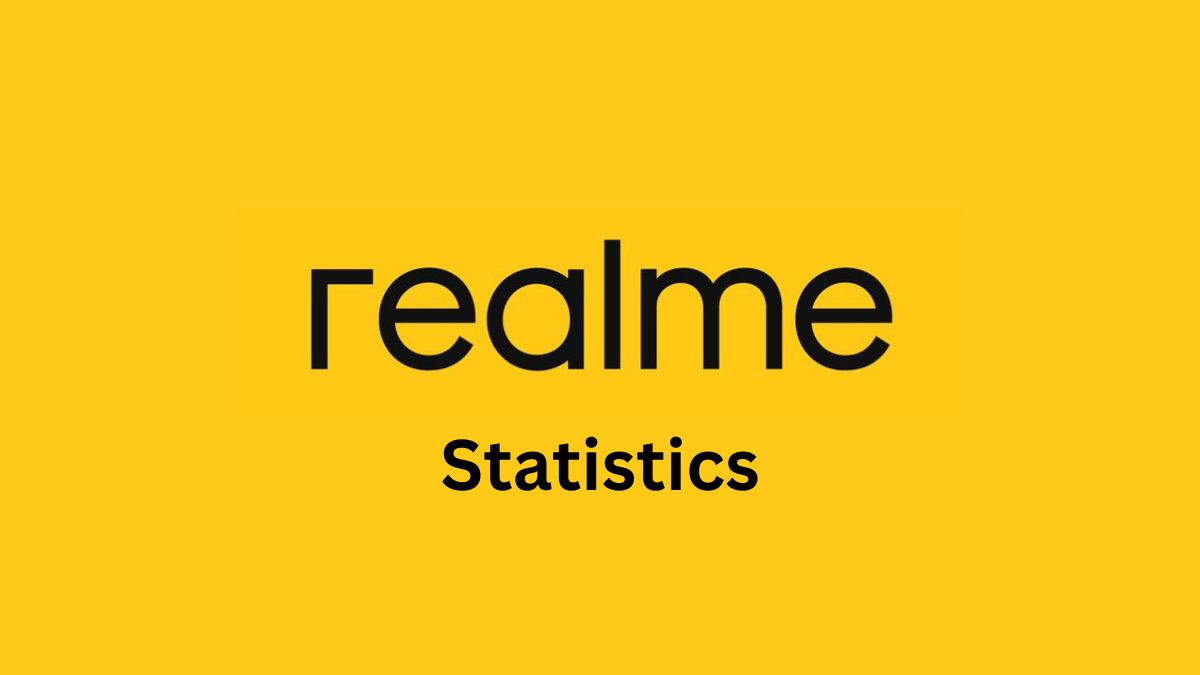Business Coaching Statistics By Generation, Types And Facts (2025)
Updated · Jul 09, 2025

Table of Contents
Introduction
Business Coaching Statistics: Business coaching has been identified as a crucial tool that initiates leadership activities, then productivity, and ultimately leads to a profit orientation. Significant growth has been experienced in 2024, reflecting the determined edge that the phenomenon has acquired within the vibrant contemporary business environment.
The global business coaching market has demonstrated remarkable growth, reaching an estimated USD 6.25 billion in 2024—up from approximately USD 5.34 billion in 2023—reflecting a compound annual growth rate (CAGR) of around 17% from 2019 to 2024. This expansion parallels a rise in coaching practitioners, growing from about 109,200 in 2023 to an expected 145,500 in 2024—a 54% increase since 2019, with a CAGR of roughly 15.4%. In the United States, the business coaching segment alone generated approximately USD 14.1 billion in revenue in 2023, indicating strong domestic demand.
Additionally, average hourly rates for business coaches globally hover near USD 244 per hour, underscoring the premium value placed on coaching expertise. These figures highlight how business coaching has solidified its position as a strategic driver of leadership, productivity, and profit orientation in today’s competitive business environment.
This article will delve into some newer business coaching statistics, providing details on market size, ROI, and trends.
Editor’s Choice
- The International Coaching Federation ranked the whole global coach ecosystem (platforms, training, and services) at $22 billion in 2023, projecting it to run over $25 billion by 2025.
- The number of active coaches has jumped from 71,000 in 2019 to over 145,000 in 2024, and 167,300 is expected in 2025.
- The average hourly coaching rate is $256 as of 2024, and most coaches average 12-13 clients.
- Active practice in the coaching profession sits at 92% among certified coaches.
- From 2011 to 2023, a 40% increase has been recorded in the hiring revenue of the U.S. coaching market, reaching $1.43 billion since 2016.
- About 24% of business owners trust coaches in making decisions, second only to other business owners.
- In challenging market conditions, 54% of business owners would rather hire a coach.
- 85% use personal referrals to find a coach, while 53% look for client reviews and testimonials for confirmation.
- Presentation: 49% of Baby Boomers, 40% Gen Xers, 8% Millennials, 3% Greatest Generation, <1% Generation Z.
- Leadership coaching leads the pack at 41%, followed by executive at 18%, life at 11%, and career at 8%.
- Business coaches enjoy a high return on investment, as 95% rate their coaches as “good” or “excellent,” and 96% would undergo coaching again.
- Then there is the deep impact of coronavirus: in-person coaching went down by 82%, while virtual coaching went up by 83%.
- During the pandemic, 4% of the coaches shut their businesses down, 7% became unemployed, and 8% changed professions.
- 47% of business coaches suffered income losses as compared to 40% of non-business coaches.
Coaching Industry Market Size
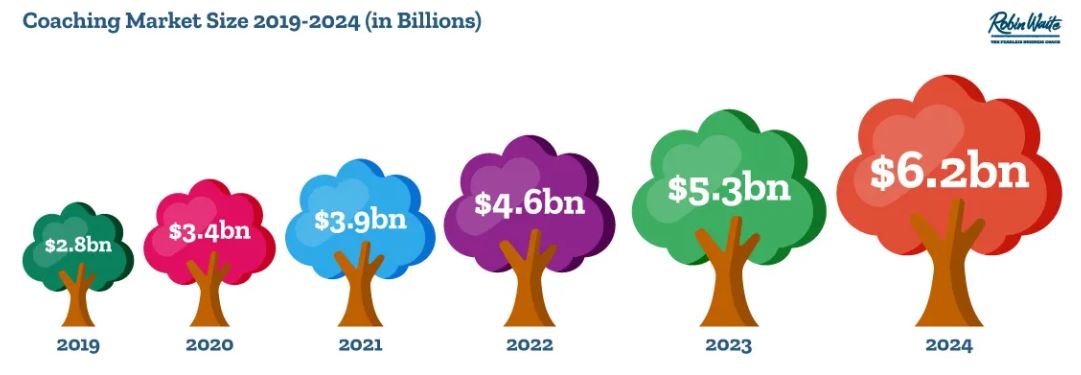
(Source: robinwaite.com)
- As per Robinwaite, Business coaching statistics state that between 2019 and 2022, the coaching industry experienced geological momentum, with a 17% CAGR. This is a clear manifestation of increased revenues realised by coach practitioners, from $2.85 billion in 2019 to $4.65 billion in 2022, marking a 60% increase in just three years.
- By 2024, the enumeration of active coaches worldwide reached 145,500. This number has more than doubled since there were only 71,000 coaches in 2019.
- Increasing trends are even more anticipated, projecting approximately 167,300 active coaches worldwide in 2025.
- The larger coaching environment with platforms, coach training, and support services has grown tremendously.
- By 2023, almost USD 22 billion was the approximate global market size of this ecosystem, citing updated estimates of PwC (formerly known as PricewaterhouseCoopers). This number further increased in 2024, and analysts project that it might hit more than 25 billion by the end of 2025, purple stitching coaching among one of the fastest-growing sectors in the professional development world. Regarding revenues from active coaching professionals only, this industry has seen continued enhancements.
- Revenues grew by 62% between 2019 and 2023, and that positive trend shall continue into 2024 and 2025. Certified coaching practitioners saw a steady increase in numbers as well, from 71,000 registered in 2019 to over 126,000 by 2023.
- The estimated count breaches 145,000 in 2024, assuring steadiness in growth and sustained interest in professional certification by coaches.
- In terms of compensation, their average hourly rate is $256. Included in a 5% increase in 2023 over 2022, the trend continued and showed some significance to the demand for professional coaching services in the market.
- Most coaches will tend to have from 12 to 13 clients at any one point in time.
- Coaching hours weekly observed just small changes inside a 1 to 2% range considering the level in 2019, which means that workloads remain one of the very stable aspects in the industry.
- Almost 92% of certified coaches are already active while practising as of 2024. This testifies to good levels of commitment and activity.
- Particularly strong has been the market in the United States over a longer term. It grew 30%, from $707 million to over $1.02 billion, between 2011 and 2016.
- Thereafter, the same trend saw a 40% increase from 2016 to 2023, with the market pegged at approximately $1.43 billion.
- This steady growth has been empowered by the increased awareness amongst the public about the benefits of coaching, broader acceptance of coaching practices in the workplace, and increasing cognisance of more specialised areas of coaching, such as executive coaching, leadership coaching, or health and wellness coaching.
Value of Business Coaching
- More and more business owners are beginning to recognise the benefits of business coaching in making their venture successful.
- Approximately 24% of business owners privately accept that they rely on a business coach when making major decisions relating to their work. This puts business coaches as the second most trusted source of advice, just behind fellow business owners, who command 31% respect.
- Another 31% opined that coaches make the greatest impact in their strategic planning. The actual effectiveness of a business coach is visible in their clients’ satisfaction ratings: 61% of respondents rated the impact of their coach at 7-9 on a 10-point scale. This implies the majority of clients see business coaching as a definite value to their lives.
- Concerning coaching benefits, 31% of business owners consider accountability the number-one benefit, followed by someone to support business growth and profitability (30%), and another space in which to address business concerns (26%).
- Market conditions set another parameter for coaching demand. In fact, when the market is considered strong, 46% of business owners indicate their willingness to hire a coach, whereas if the market is unstable, this number rises further to 54%, which hints that uncertainty may work in favour of expert guidance.
- When it comes to selecting a coach, personal referrals are heads and shoulders above the rest, as 85% of respondents admitted considering referrals as the most reliable way to get the right coach.
- Moreover, 53% indicated that testimonials and reviews from other clients give them the most confidence before making the decision. This underlines that social proof and personal recommendations hold a greater weight in the coaching industry.
Business Coaching By Generation
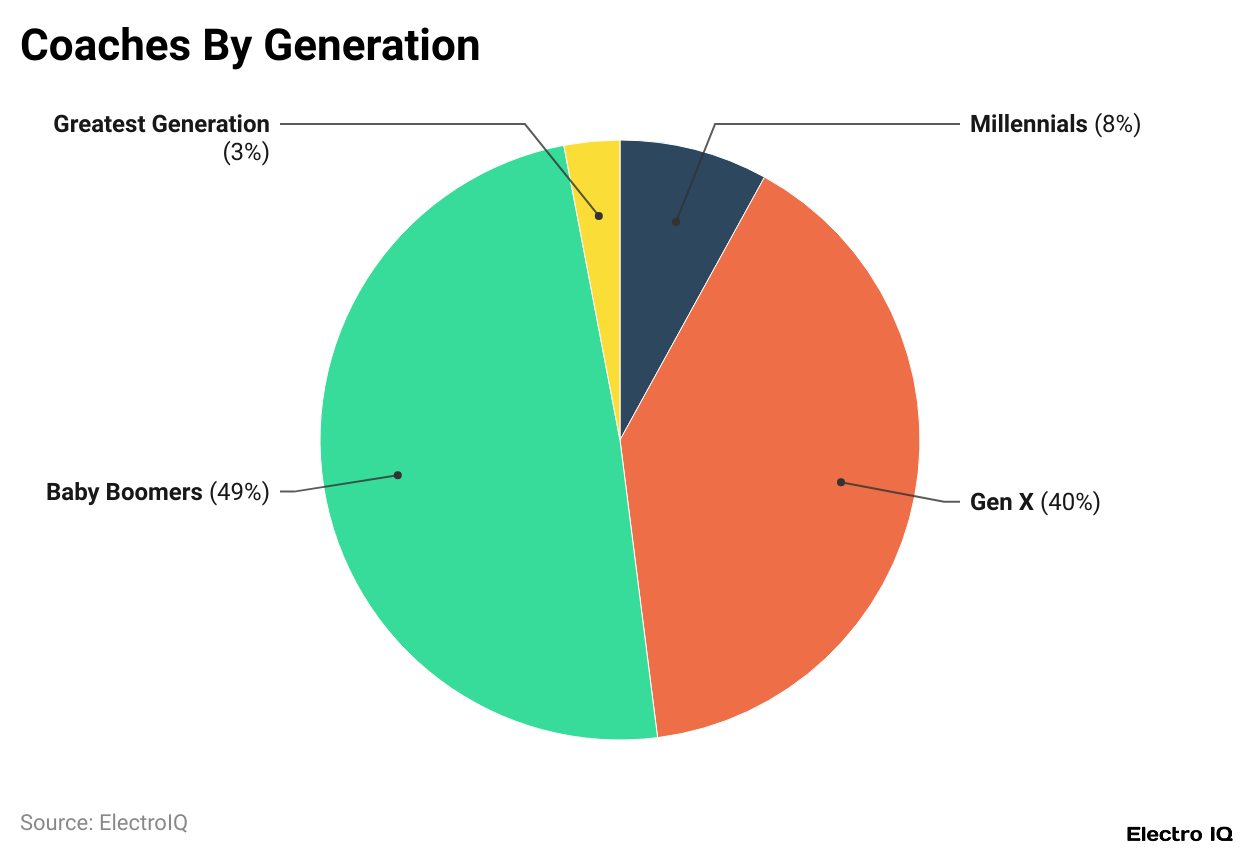
(Reference: iacareercoaches.org)
- According to iCareerCoaches, Business coaching statistics show that from the viewpoint of age dispersal, it appears that most are coming from an older generation.
- Nearly half, representing 49% of all coaching practitioners, belong to the Baby Boomers generation, making it the highly represented cohort in the coaching profession.
- This is closely followed by Generation X at 40%. Millennials are 8%, while a greater minimum of only 3% can be accounted for by the Greatest Generation.
- Generation Z is just barely making its entrance into the field, with less than 1% representation. This generational breakup signifies that coaching is currently dominated by seasoned practitioners, many of whom have one or two decades of career and life experiences to impart to their individual practice.
Types of Coaches
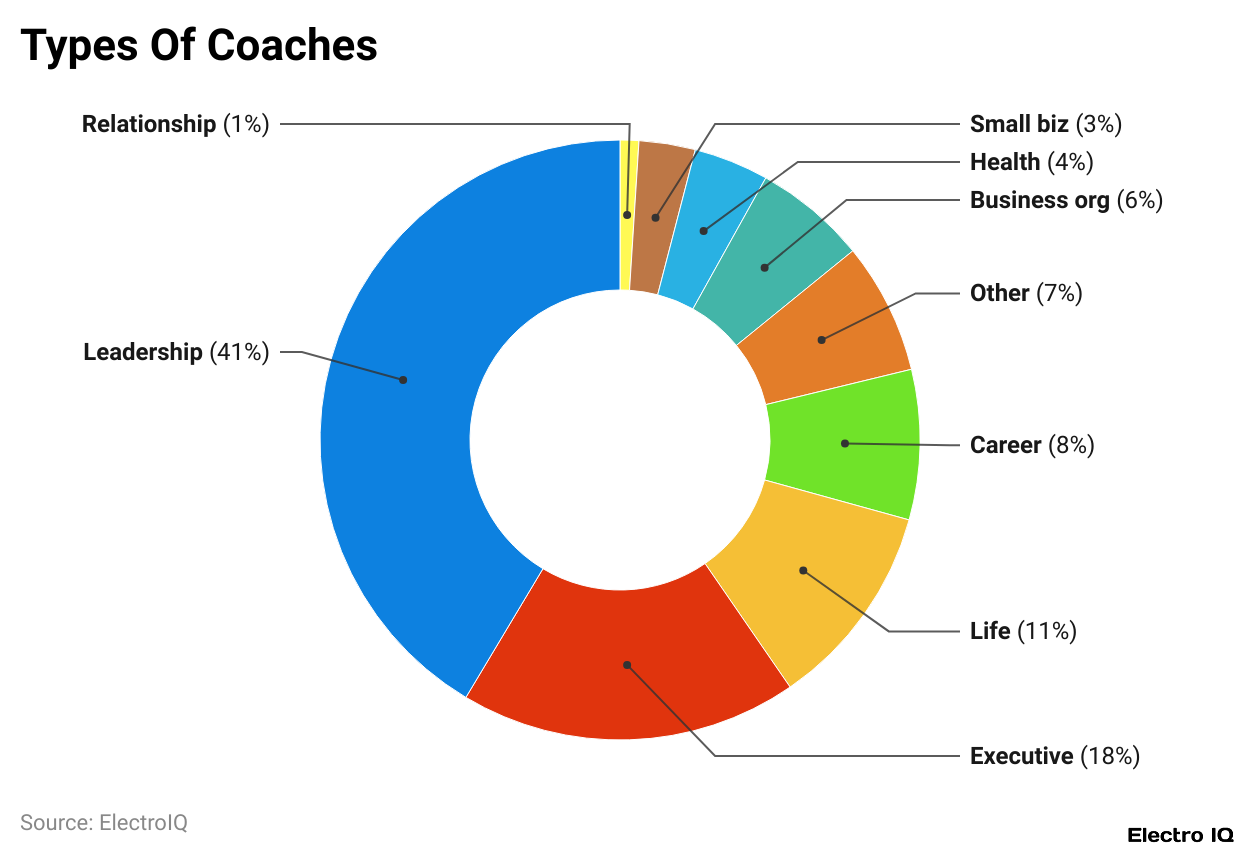
(Reference: iacareercoaches.org)
- The coaching industry is varied, with particular members focusing on different specialities to appeal to different client needs.
- The most popular type of coaching is leadership coaching, which accounts for 41% of the entire set of coaches. Executive coaching ranks second at 18%, reflecting the enormous appetite for guidance at paramount organisational levels.
- The life coaches make up 11% of all coaching, developing the trajectory of an individual in person and about life goals.
- Career coaches constitute around 8%, who help clients through job transitions and career planning.
- Other coaching accounts for roughly 7% covering niche areas.
- Business organisation coaches make up about 6%, aiming at better performance of organisations. Health coaches are 4%, offering some sort of advice toward wellness and lifestyle.
- Small business coaches constitute 3% of the total, serving the specialised needs of entrepreneurs.
- Relationship coaching makes up the smallest cluster at barely 1%, focusing on interpersonal and romantic relationships.
Business Coaching ROI
- To gauge return on investment (ROI), coaching services often capture client feedback and surveys to reflect both tangible impact and personal experience. Because coaching cuts across several industries and diverse business models, the results do vary greatly. Several statistics, however, highlight the strong appreciation of coaching worldwide.
- According to a survey conducted by the International Coaching Federation, 95% of clients rate their coach “good” or “excellent.” Satisfaction levels were ranked extremely high among the 99% of companies and individuals who received coaching.
- Furthermore, respondents willingly stated that 96% would pursue coaching again, indicating strong overall value.
- 68% of those who paid for coaching financially gained something at least equal to what was paid for; the median value of return on investment for an individual is three and a half times the amount spent.
- The Return on Investment (ROI) median for individuals was 3.4 times the original investment. Even more extraordinary were the results from companies.
- The median ROI companies got was seven times their initial investment, and some claimed returns as high as 50 times.
- 20% of businesses, in fact, said their coaching ROI was 50 times their expenditure. A further breakdown of the ROI shows 14% of clients returned less than 1x, 39% between 1x and 10x, 28% between 10x and 49x, and 19% over 50x.
- This glaringly shows that although results may vary, many clients—especially companies—sharply consider coaching as a profitable investment.
Business Coaching And Company Culture
- Companies treating business coaching as part of their organisational culture surpass performance metrics in many ways.
- For example, organisations that have a strong coaching culture report a 14% increase in their ability to solve problems when compared to organisations that do not have such a culture.
- The agility of teams also appears to get a boost, with an 18% improvement witnessed in firms that actively promote coaching. This is another crucial area for innovation where coaching plays its part.
- Organisations that infuse coaching into their culture report a 21% surge in innovation by teams as compared to those that do not.
- Strategic planning also gets better, with these organisations experiencing a 32% improvement in their capacity for effective planning and execution of long-term goals.
- Beyond all performance metrics, coaching culture fosters an employee experience.
- Job satisfaction grows by 39% within organisations that have a well-established coaching culture, and organisational commitment—the degree to which employees feel dedicated to their workplace—also goes up by 22%.
- These results mark coaching as a major enabler for business outcomes and an engaged and motivated workforce.
COVID-19 Reshaped The Coaching Industry
- The coaching industry faced some severe disruptions during the COVID-19 crisis-causing a slump, unlike some other industries, which saw an upward trend during this time.
- Many individual practitioners and coaching businesses faced reduced revenues and had to modify their delivery style to survive. Before the pandemic, 24% of coaches worked exclusively with clients in person.
- However, even before COVID-19, the transition to virtual modes had started: between 2015 and 2019, audio-video tools were used for coaching from 24% to 48%. This shift was instead heightened suddenly and fast.
- The use of audio-video platforms like Zoom and Microsoft Teams witnessed a staggering 83% hike, whereas in-person coaching took an 82% dip.
- In the present day, 87% of coaching practitioners expect this trend to continue long term, discovered how remote sessions can be done more efficiently and at farther reach. But the pandemic caused a bigger disruption than coaching delivery: 4% of coaches had to shutter their businesses, 7% went out of jobs, and 8% took a tumble into a different career.
- However, the recovery appeared to be happening in the early stages. From mid-2020 to early 2021, the percentage of coaches reporting lower income has dropped by 5%, joined by a 5% drop for those working fewer hours. These might be signs that the industry is slowly coming back to pre-pandemic levels.
- The financial impact also varied globally by region. In the regions of Asia, Eastern Europe, the Middle East, Africa, and Oceania, half the coach population has been affected by the loss of income.
- In Western Europe and North America, 42% of the coaches had to deal with lower earnings.
- The question least affected was Latin America and the Caribbean, where only 28% said their income had reduced.
- Out of all coaching areas, business coaching has seen the worst hit, with 47% of business coaches reporting losses in income compared to 40% of those in other niches. Client numbers also took a hit; 42% of coaches indicated having fewer active clients during the pandemic.
- At the peak of the crisis, in the middle of 2020, 57% of practitioners witnessed drops in their earnings.
- Slightly better fortunes came to light in early 2021 when this figure dropped to 46%, thereby showcasing the slow but steady financial recovery of the industry.
Conclusion
Business coaching has been noted for phenomenal growth and ROI, as well as evolving trends that can now meet the ever-changing demands of the modern business world. With the growth of internet platforms, niche specialities, and the focus on measurable outputs, business coaching remains an intervention through which an organisation’s design may enhance performance and realise strategic objectives.
FAQ.
The coaching industry today, which includes platforms, training, and services, is valued at more than $22 billion and is expected to reach $25 billion by 2025. Revenue derived from coaching practitioners alone experienced a jump from $2.85 billion in 2019 to $4.65 billion in 2022.
Businesses have a median return of around 7 times their outlay on coaching, whereas 19% cite an ROI that is greater than 50 times. Individual clients have a median ROI of 3.4 times, and 96% state that they would do coaching again.
Almost 90% of coaches are Baby Boomers (49%) and Gen X (40%), with lots of life and work experience under their belts. Then we have a mere 8% of coaches who are Millennials and less than 1% of those who belong to Generation Z.
COVID-19 accelerated the shift toward virtual coaching. In-person coaching witnessed an 82% decline, whereas coaching via video saw an 83% increase. Meanwhile, 87% of coaches expect this virtual trend to continue. Business coaching was the most affected, with 47% reporting income losses.
85% of clients trust word of mouth to choose a coach. Testimonials and reviews from other clients also weigh heavily on their decision, with 53% saying it gives them the most reassurance before making an actual decision.

Joseph D'Souza founded ElectroIQ in 2010 as a personal project to share his insights and experiences with tech gadgets. Over time, it has grown into a well-regarded tech blog, known for its in-depth technology trends, smartphone reviews and app-related statistics.




